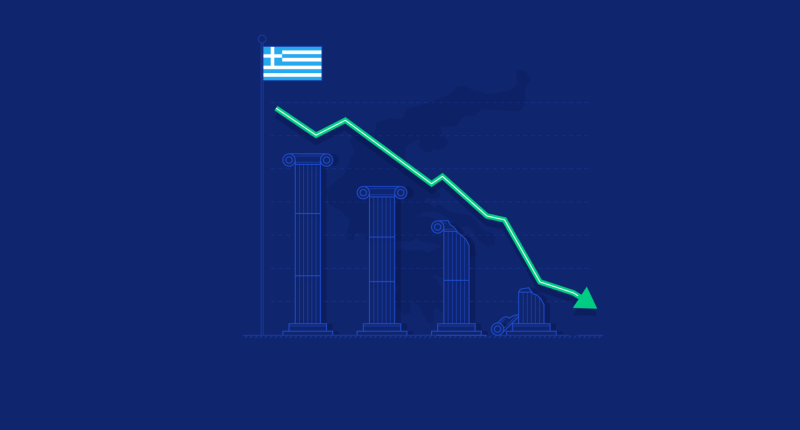Understanding the Greek Debt Crisis
Origins of Greece’s Financial Collapse
The Greek debt crisis began in late 2009 when the government revealed its budget deficit had soared to 15.1% of GDP, far exceeding earlier estimates. This revelation exposed years of fiscal mismanagement, including underreported deficits and excessive borrowing since the 1980s. Greece’s adoption of the euro in 2001 masked structural weaknesses, as access to low-interest loans fueled unsustainable spending on infrastructure and public services.
Key Causes of the Debt Crisis
1. Fiscal Profligacy and Debt Accumulation
Greece’s debt-to-GDP ratio ballooned from 103% in 2000 to 127% by 2009, driven by unchecked government spending and tax evasion. The 2004 Athens Olympics alone cost €9 billion, exacerbating deficits.
2. The 2008 Global Financial Crisis
The Great Recession shattered Greece’s fragile economy, causing GDP to contract and tax revenues to plummet. As global credit markets froze, Greece lost access to affordable borrowing, pushing it toward default.
3. Membership in the Eurozone
As a eurozone member, Greece could not devalue its currency or adjust interest rates independently. This lack of monetary flexibility worsened the crisis, forcing reliance on EU bailouts.
The Bailout Era and Austerity Measures
1. The 2010 Bailout and Austerity Demands
In 2010, Greece received a €110 billion bailout from the EU and IMF, conditional on severe austerity: tax hikes, pension cuts, and public-sector layoffs. These measures triggered nationwide protests and a 27.5% unemployment rate by 2013.
2. Debt Restructuring and Private Sector Involvement
A 2012 deal imposed a 50% “haircut” on private creditors, reducing Greece’s debt by €100 billion. However, most debt shifted to EU institutions, creating long-term dependency.
3. The 2015 Referendum and Third Bailout
In 2015, Greek voters rejected further austerity, leading to a banking shutdown and a third bailout worth €86 billion. The Syriza government’s capitulation deepened public disillusionment.
Social and Economic Consequences
1. Human Cost of Austerity
Austerity decimated public healthcare and education, while over 400,000 Greeks emigrated between 2008–2016. Youth unemployment peaked at 58%, fueling a “brain drain”.
2. Political Turmoil
The crisis toppled governments, with Prime Minister George Papandreou resigning in 2011 after EU pressure. The rise of anti-austerity parties like Syriza reflected widespread anger.
3. Long-Term Economic Damage
Greece’s GDP shrank by 25% between 2009–2016, and debt remains at 180% of GDP despite bailouts. Recovery has been slow, with growth averaging 1.2% annually post-2018.
Lessons from the Greek Debt Crisis
1. The Perils of Fiscal Irresponsibility
Greece’s crisis underscores the dangers of unchecked borrowing and accounting fraud. Transparent fiscal governance is critical for eurozone members.
2. Flaws in Eurozone Architecture
The crisis exposed the eurozone’s lack of mechanisms to manage sovereign defaults, forcing reliance on politically contentious bailouts.
3. The Human Toll of Austerity
IMF leaders later admitted that austerity measures deepened Greece’s recession. Balanced reforms that protect vulnerable populations are essential.
A Cautionary Tale for Modern Economies
The Greek debt crisis remains a stark warning about fiscal discipline, monetary union vulnerabilities, and the human cost of economic mismanagement. While Greece exited its bailout in 2018, its debt burden ensures challenges persist for decades.









